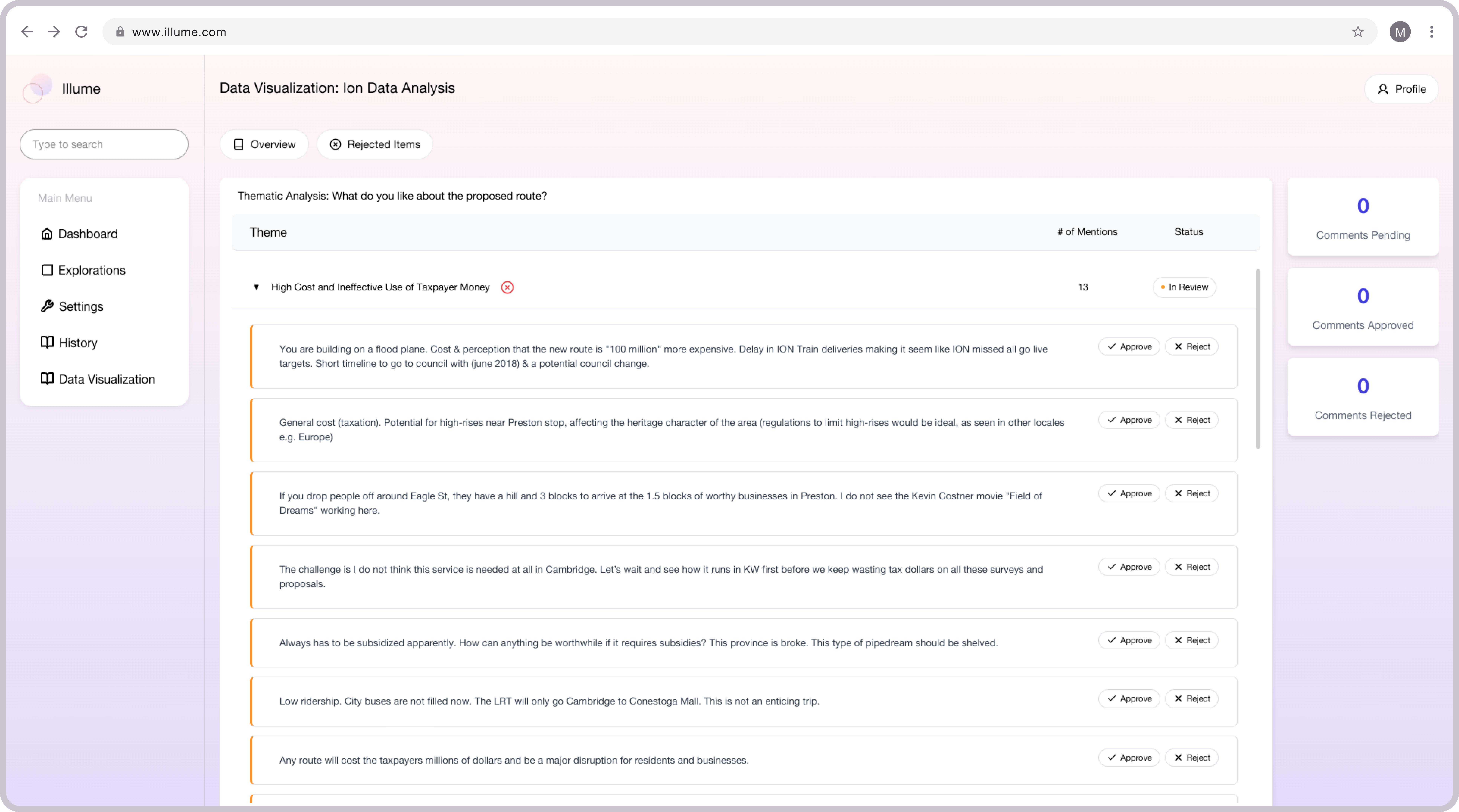Design is, in one sense, a promise. You are promising to solve a problem your users are experiencing. Like all promises, you should honour this promise. You must be honest and clear about the ability and limitations of your design. Moreover, your design should be tailored to the problem it's trying to solve – and be intended to solve a genuine problem. Good design serves an ethical purpose and does so in efficient and effective ways.
Design can reinforce social disadvantage, or it can help people overcome it. But it can only do this if we bear in mind all the possible users, without dismissing some groups as 'edge cases'.
The Problem
The specific problem statement would go here, describing the challenge that Illume aims to solve.
The Solution
Illume is designed to empower civic intelligence. The solution focuses on addressing the core problems identified during research by providing a platform that connects citizens with their community and government.
The Research
Research methodology and findings would be detailed here, highlighting key insights that informed the design process.
I found that:
- Key finding one about civic engagement.
- Key finding two about information accessibility.
- Key finding three about community participation.
- Key finding four about civic intelligence barriers.
Design Goals
The primary design goals for Illume were to create an intuitive platform that empowers citizens with information and tools for civic engagement.
Each design decision was made with these goals in mind, ensuring that the final product would effectively address the identified problems while providing a seamless user experience.
Design Decisions
This section would outline the key design decisions made during the development of Illume, with rationales for each choice based on research insights and user needs.
Design Solution
The final design solution incorporates all the research findings and design goals into a cohesive product that effectively addresses the identified problems and meets user needs.
Reflections
Looking back on the project, there were several key learnings and insights gained throughout the process:
- Reflection point one about the design process.
- Reflection point two about user research.
- Reflection point three about technical implementation.
- Reflection point four about community impact.
- Reflection point five about future improvements.
